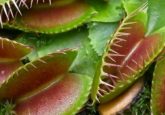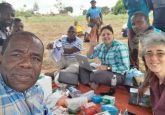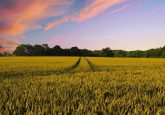Ethnobiotechnology in the Caribbean: sowing the seeds of sustainable agriculture and medicinal plant research
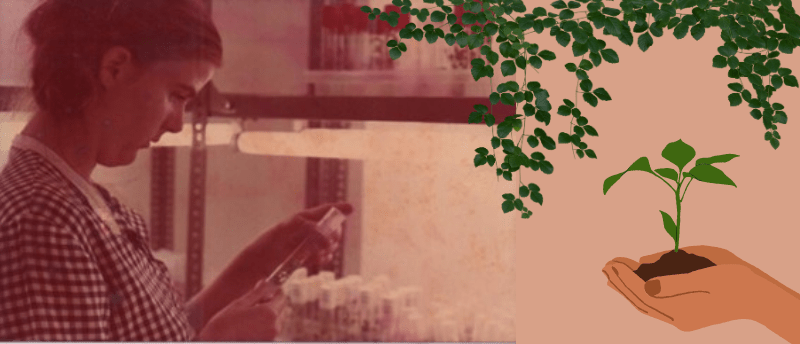
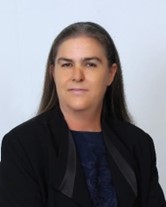 Sylvia Mitchell (left) is Head of the Medicinal Plant Biotechnology Research Group in the Biotechnology Centre at the University of the West Indies (UWI; Mona, Jamaica). She founded this research group in 1999, with the focus of sustainably utilizing plants native to Jamaica for medicinal purposes. Mitchell is in good company at the Biotechnology Centre at UWI, where various plant science projects are being conducted, such as investigating the molecular characterization of viruses affecting crops and crop bioengineering.
Sylvia Mitchell (left) is Head of the Medicinal Plant Biotechnology Research Group in the Biotechnology Centre at the University of the West Indies (UWI; Mona, Jamaica). She founded this research group in 1999, with the focus of sustainably utilizing plants native to Jamaica for medicinal purposes. Mitchell is in good company at the Biotechnology Centre at UWI, where various plant science projects are being conducted, such as investigating the molecular characterization of viruses affecting crops and crop bioengineering.
Mitchell spoke to Digital Editor Beatrice Bowlby about her career in medicinal plant research, sharing the techniques she uses for plant tissue culturing and biochemical analyses, the importance of harnessing native plant species for sustainable practices and the commercial aspects of her field of research. In honor of International Women’s Day, she also shared her personal experiences with mentoring and teaching.
A farm to help feed the world
Mitchell traveled a great deal as a child; she was born and raised in Ghana to parents who taught as well as wrote their own textbooks in mathematics and science. From there, Mitchell’s family moved to the US and then to Jamaica, where they settled. After high school in Jamaica, Mitchell spent a further 2 years in England studying for her A-levels before returning to Jamaica for university and life.
When Mitchell was a child, she wanted to grow up to be a farmer. This desire would go on to inform the subjects she chose to study, leading her to achieve a BSc in botany and geography from UWI Mona. Mitchell then began working at the Scientific Research Council (SRC; Kingston, Jamaica), where she was asked to transform two empty rooms into a functional tissue culture lab. At the time, Mitchell was nursing her first child, so requested they ask her again in 6 months, which they did. While building the tissue culture lab at the SRC, Mitchell dedicated her lunch time and after work time to the development of her MPhil, which was concerned with finding more viable and sustainable ways of producing clean planting material of yam via tissue culture.
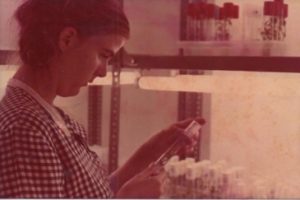
Mitchell in the SRC tissue culture lab, 1987
When Mitchell requested study leave from SRC to transfer her MPhil to full-time PhD study, the request was denied. Mitchell therefore left the security of work to pursue her PhD at UWI’s Biotechnology Centre. It was here that Mitchell continued her research on the tissue culture propagation and physiology of tropical yams. In 1999, she set up her Medicinal Plant Biotechnology Research Group at the Biotechnology Centre; although provided with a lab, she was not given a salary. In 2000, having been awarded her PhD in biotechnology, Mitchell joined the staff of the UWI Biotechnology Centre.
For the last 25 years, Mitchell has been researching how native plants can be harnessed for health and wealth for Caribbean communities. In Mitchell’s line of research, it is essential to disseminate that information to farmers, governing bodies and industry partners in order to have the greatest impact.
A biodiversity hotspot
When assessing how she could make the biggest impact on crop cultivation, Mitchell went from wanting to be a farmer, to wanting to provide healthy and nutritious food, to realizing that the agricultural system was being hamstringed by a lack of clean planting material. Mitchell realized that once this challenge is overcome, and the tropical soils managed, agriculture thrives and crops can reach their full potential.
Where better to address the quality of planting material than in the Caribbean, the seventh-largest biodiversity hotspot in the world, making it one of Earth’s most biologically rich yet threatened areas [1, 2]. This encouraged Mitchell to learn how people in Jamaica use local plants. After careful scientific study, Mitchell was able to add this valuable information to the Caribbean’s Traditional Medicine of the Islands (TRAMIL) database, which is accessible to everyone. To this database, one can submit recipes identified using the TRAMIL questionnaire and methodology that details how plants are used by locals for medicinal purposes, which are then tested for toxicity and efficacy; if they pass these tests, they are filed in the Caribbean Pharmacopeia. Additionally, Mitchell has built her own database, which presently includes 3566 plants with at least one medicinal use in the Caribbean recorded in literature written by local Caribbean people, contributing to a repository of Caribbean-grown (endemic, indigenous or introduced) plants and their medicinal uses.
Due to the great biodiversity in the Caribbean – for example, there are still plants in the forests of Jamaica that are unknown to science – the need isn’t so much for genetic modification or transformation as it is for characterization, propagation, preservation and sustainable use of local plants for food and medicinal purposes to benefit local communities.
Optimizing growth
Plant tissue culture protocol
Plant tissue culturing entails placing parts of plants in glass containers with suitable media and can be used to obtain disease-free material for the characterization, cultivation and bioactivity testing of these plants. These protocols are also used for multiplying planting material, conserving elite plant varieties and bio-farming. Mitchell is using tissue culture protocols to profile native plants, bringing plants into the lab and growing the cleanest version of the plant possible via meristem-tip culture, micropropagation and somatic embryogenesis.
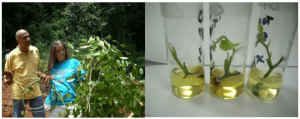
Left: chainy root (Smilax balbisiana) collected from the wild to be taken to the lab for culturing. Right: initiation of chainy root node explants.
The first stage is taking a portion of a plant out of the wild (right). Then, one must clean the explant – a part of a plant that will be transferred to a nutrient medium – and remove surface contaminants. This is called initiation (far right). Explants with pre-formed meristem are chosen to maintain genetic integrity – either a shoot tip, buds or leaves with meristem dots, such as leaf of life. To obtain virus-free plantlets, the 0.1 mm meristem tip of the plant is cultured. Within a week or two, new growth can be seen from these plant stem cells.
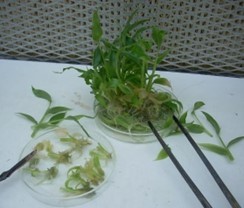
Cutting of a ginger clump into new propagules.
The next step is multiplication where researchers cut the clean explant into node, shoot or bud propagules (left). These propagules can then be recut (subcultured) every month to obtain even more propagules, or the medium can be changed to allow for in vitro rooting. Mitchell prepares culture media resembling Jell-O for the plants to grow on. The media contains macro and micronutrients, sucrose, vitamins as well as growth hormones, which are varied depending on the plant being cultured and the desired outcome; different media can trigger shooting, callusing, flowering or production of microtubers (tiny tubers that can be used as clean planting material).
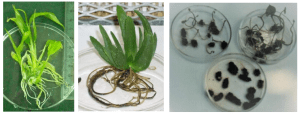
Rooted ginger plantlet, aloe plantlet and sprouted yellow yam microtubers.
In the next stage, rooting takes place (right). Some plants will multiply and root on the same medium like ginger (Zingiber officinalis), turmeric (Curcuma longa) and leaf of life. For others, removing all growth regulators results in rooting, like yam (Dioscorea spp.) and sweet potato (Ipomea batatas). Others require auxin in the media to produce roots in culture, such as pineapple (Ananas cosmosus).

Hardening – using a small or large greenhouse – takes about 2–3 weeks.
Taking plantlets out of tissue culture is the last stage; they need to be hardened in order to acclimatize to field conditions (left). The miniaturized plants are nurtured under specific humidity and light conditions in different sized greenhouses – from a plastic cup covering one plant, to space that can harden hundreds at a time. Farmers and students are being trained to harden their own plantlets.
After 2–3 weeks the plantlets are hardy enough to remove the greenhouse. Since plant size is limited by pot size, they need to be transferred to larger pots for another couple weeks before they can be planted into the farmer’s field. This stage is called acclimatization, finishing when the plant is the same size as it was before it went into tissue culture.
Eventually, a harvest can be obtained from these hardened plants. The cloned plantlets still in vitro can be used to culture another set of plants and so on. Presently Mitchell maintains an in vitro gene bank containing varieties of yam (19), sweet potato (3), ginger (3), turmeric (1), cocoyam – Colocasia esculenta (3), dasheen – Xanthosoma sagittifolium (1), leaf of life and pineapple (3), with new varieties added continually. These can be hardened any time of the year to provide clean planting material for farmers.
The plants grown in culture are free of bacteria, fungi and viruses and therefore have higher sprouting rates than plants not grown through tissue culture. The cultured plants almost guarantee successful plant growth and are less affected by disease. Mitchell has been providing clean planting material in the form of hardened plantlets to farmers all over Jamaica, for crops such as yam, pineapple, ginger, turmeric, chainy root and sarsaparilla.
Biochemical analysis for creating a monograph database
In Mitchell’s lab, they also conduct biochemical studies, bioactivity screens and DNA barcoding to create comprehensive profiles – termed monographs – for each plant and their potential medicinal application, linking morphology, phytochemistry and genetics. These bioactivity screens consist of extracting and identifying bioactive compounds, such as the identification of antibacterial and anti-fungal compounds from in vitro grown bottlebrush (Callistemon viminalis) [3] and determination of the anti-cancer phytochemical yield in somatic embryos of guinea hen weed (Petiveria alliacea) [4]. In vitro growth and physiology are monitored by biochemical determination of antioxidant and chlorophyll levels. This analysis is an essential part of determining a plant’s medicinal and industrial potential.
Community at the core
Mitchell is vocal about why this research is important; it expands far beyond the lab, benefiting the communities within which those labs are situated. Additionally, medicinal plant research has ancestral roots, developing from word-of-mouth plant remedies. Not only looking to the past, Mitchell also takes an active role in preparing for the future of her community and others in the Caribbean, setting up community and school gardens while teaching young people how to grow plants and take data to scientifically determine the conditions under which they grow best.
Another aspect that Mitchell considers is how to make the solutions more accessible and sustainable. She uses containers that are being thrown away, such as toilet rolls, for her tissue culturing. Beyond sustainability, another advantage of using these containers is that it’s made Mitchell’s clean planting material more accessible to farmers. In 2023, Mitchell planted 160 yams in toilet rolls and transported them easily to farms to place them in the ground. Mitchell emphasizes that because she’s taking data on these plants as well as providing them to farmers, it’s a win–win. She is both furthering her research and cultivating community ties and sustainable food supplies.
Science needs support
When speaking with Mitchell, I asked if she had any mentors, any people who influenced and supported her work. She immediately mentioned her mother, a writer and educator, who inspired her to pursue a career in science and outreach. Her mother wrote approximately 140 science and English textbooks, workbooks and teaching guides, some of which were translated into different languages and published around the globe [5]. Although Mitchell received support from her family, she shares that she was one of very few researchers tissue culturing Caribbean medicinal plants, making collaboration and mentoring opportunities scarce. This, however, has not put her off being a mentor herself, investing time and energy in young people who show an interest in the work she’s doing.
There is another kind of support that needs to be highlighted in Mitchell’s research, and that is the importance of economic and commercial support, which is essential for the continuation of her medicinal plant research and its beneficial impact on the local communities she works with in Jamaica. “I found that just doing science is not enough. You have to train students and give them an entrepreneurial ability because they are going to need to make this into a business.” Part of this research, like much of science, is convincing funders that it’s worth doing, so
Mitchell’s students have been taught to package their research to be commercially relevant; Mitchell uses previous student Chenielle Delahaye-McKenzie’s research-turned-business as an example. With more support, Mitchell is sure that their work could expand, characterizing and sustainably utilizing more of the Caribbean’s native plant biodiversity.
Mitchell’s career has developed the way it has because of her multifaceted interests in botany, geography, pharmacy, tissue culture, biotechnology and community (summarized as ethnobiotechnology), which stem from her childhood desire to help feed the world. In her role, Mitchell is promoting sustainable agriculture in the Caribbean, growing clean plants for economic purposes, composing monographs on numerous local medicinal plant species and emphasizing the importance of community, which is at the core of her work.


